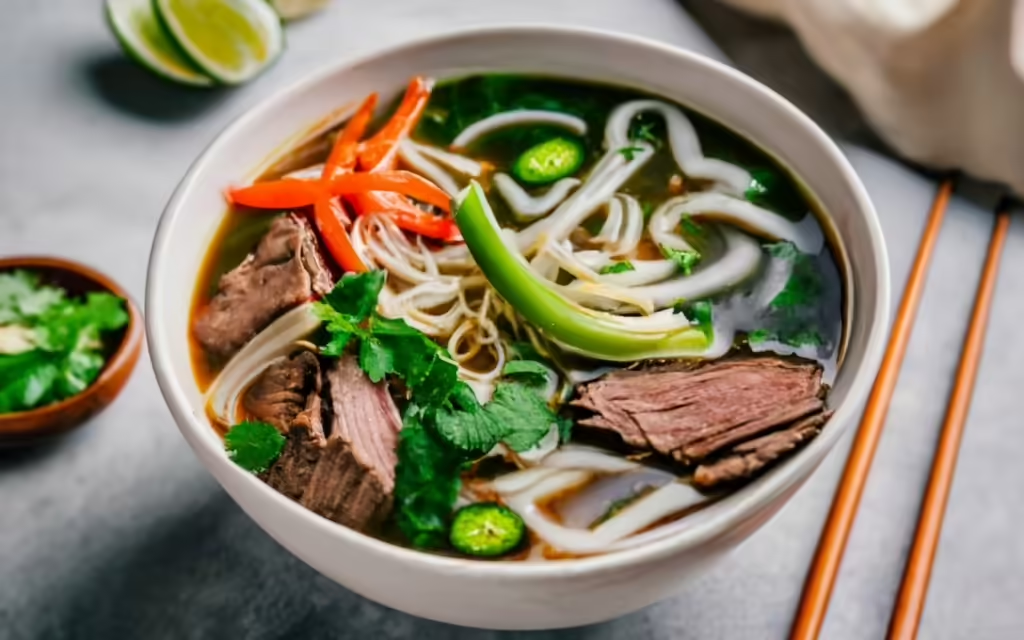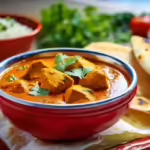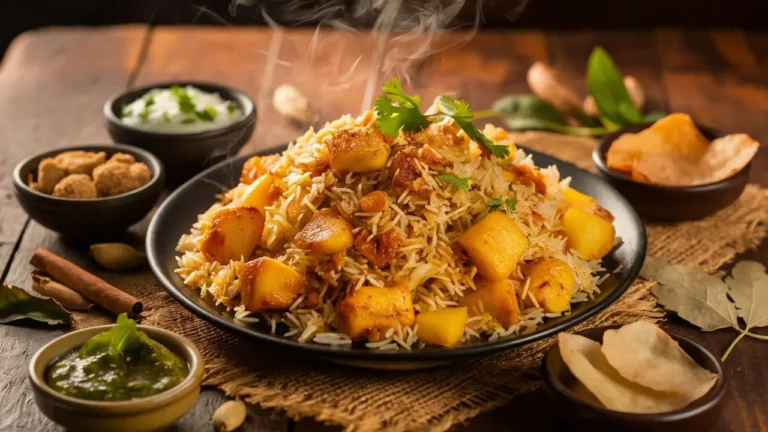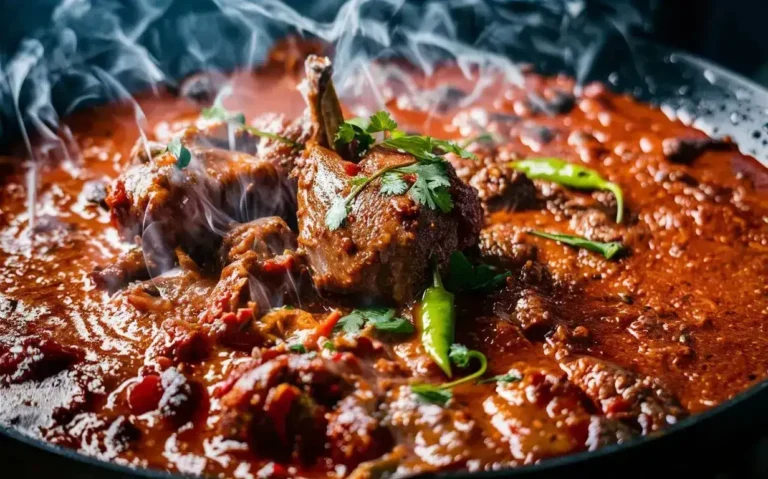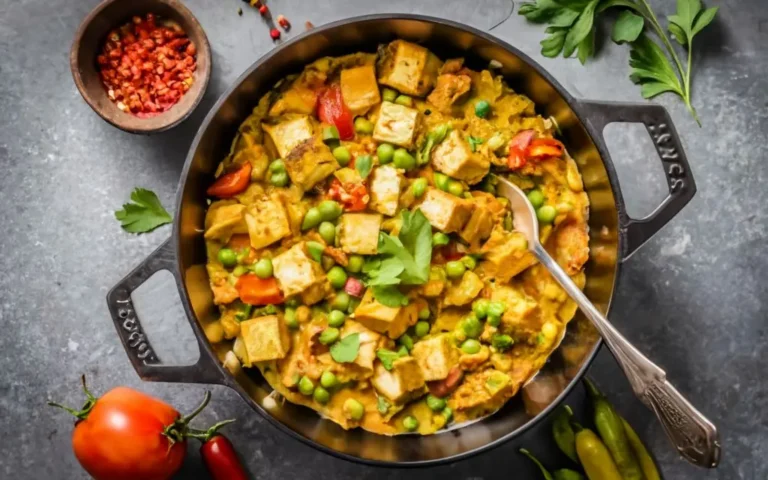Pho (pronounced “fuh”) is a nourishing Vietnamese noodle soup that has gained immense popularity across the world. With its complex and fragrant broth, tender rice noodles, and fresh garnishes, classic beef pho is the ultimate version of this iconic dish.
A Brief History of Pho
Pho likely originated from the city of Hanoi in northern Vietnam. Its birth is largely credited to the influx of French colonization in the late 1800s, which brought cows and noodles to the local cuisine.
The word “pho” comes from the French “feu” meaning fire or flame. This refers to the steaming hot broth that is essential to the dish.
Over the years, pho has evolved from a simple peasant dish to a national symbol of Vietnam that is cherished by both locals and foreigners alike.
What Makes Classic Beef Pho So Special
There are many variations of pho throughout Vietnam and the world. But classic beef pho reigns supreme for several reasons:
The Rich Bone Broth
The foundation of any great pho is the broth. Classic beef pho begins with a from-scratch bone broth made by simmering beef bones (typically leg and knuckle bones), onions, ginger, star anise, cloves, cinnamon, and fish sauce for hours. This long simmer extracts maximum flavor and collagen from the bones, resulting in a rich, complex broth.
Tender Beef Cuts
Thin slices of rare steak are added to the broth just before serving. Traditional cuts include sirloin, flank, brisket, and eye of round. The heat gently cooks the beef without toughening it. This yields incredibly tender, melt-in-your-mouth morsels of beef.
Fresh Rice Noodles
The traditional noodle for pho is bánh phở – flat, chewy rice noodles that are custom-made for the soup. High-quality rice noodles have a pure rice flavor and silky texture that pair perfectly with the hearty broth.
Herb and Spice Garnishes
No bowl of classic beef pho is complete without fresh garnishes. Traditional plates include bean sprouts, basil, cilantro, mint, sliced chili peppers, and lime wedges. These herbs and spices add vibrant flavors and aromas to personalize each bowl.
How to Make Classic Beef Pho at Home
Making authentic pho at home may seem intimidating. But it’s quite easy with the right technique. Here’s a simple 10-step recipe:
1. Simmer the Broth
Char beef bones under the broiler. Then simmer with onions, ginger, spices, and fish sauce for at least 6 hours (ideally 12-24 hours). Strain and skim fat.
2. Cook the Noodles
Boil banh pho noodles until tender. Rinse under cold water.
3. Slice the Beef
Thinly slice raw sirloin, brisket, and flank steak across the grain. Set aside.
4. Prep the Garnishes
Slice chili peppers, lime wedges, onion, cilantro, basil, bean sprouts, etc.
5. Assemble the Pho
Place noodles in bowl. Top with slices of raw beef. Ladle hot broth over everything.
6. Add Garnishes
Let diners add bean sprouts, basil, lime juice, chili sauce, and hoisin to taste.
7. Mix Everything
Stir the noodles and garnishes into the hot broth so they absorb maximum flavor.
8. Savor the Aromas
Breathe in the intoxicating smells rising from your classic beef pho.
9. Customize Every Bite
Tweak each mouthful with more herbs, spices, hoisin, and chili to your liking.
10. Slurp and Enjoy!
Properly enjoy pho with loud slurping noises. The slurping aerates the broth for full flavor.
Health Benefits of Pho
Beyond its soul-warming deliciousness, classic beef pho also offers several health perks:
- Bone broth contains collagen, amino acids, and minerals that boost immunity, joint health, digestion, and nutrition.
- Rice noodles provide energizing carbs and almost no fat.
- Lean beef provides protein, iron, zinc and vitamin B12.
- Herbs and spices contain antioxidants and anti-inflammatory compounds.
Overall, pho offers a nourishing one-bowl meal packed with protein, carbs, and veggies. No wonder it’s considered a magical cure-all in Vietnam!
Common Questions About Classic Beef Pho
Here are answers to some frequently asked questions about this iconic soup:
Is pho gluten free?
Yes! Rice noodles and traditional pho broth contain no gluten. But check for gluten in any soy/hoisin sauces.
What is the white stuff in pho?
Those white blobs are cooked tendon or sometimes tripe (beef stomach). They provide collagen and texture.
Can you freeze and reheat pho?
Yes. The broth freezes well for months. Reheat gently with noodles and raw beef. Avoid overboiling.
Should you add Sriracha or hoisin to pho?
It’s personal preference! Those sauces can enhance but also overwhelm the broth’s flavor. Add sparingly.
Do you put hoisin in pho?
Hoisin sauce can be added to taste. But purists believe pho broth must stand on its own flavor. Mix in hoisin after tasting the pho!
The Many Variations of Pho
While beef is the most popular, pho also comes in many other varieties including:
- Chicken pho – With shredded chicken meat instead of beef. Light and cleansing.
- Seafood pho – Made with shrimp, squid, fish, and scallops. Popular in coastal regions.
- Veggie pho – Meat-free version with tofu and lots of mushrooms.
- Pho tai – Extra-rare slices of steak and brisket.
- Pho chin – With beef tendon for added collagen.
- Pho ga – Chicken and rice noodle soup. Soothing and delicate.
The beauty of pho is that it’s endlessly customizable to your tastes and dietary needs. But classic beef reigns supreme.
Where to Enjoy Classic Beef Pho
Here are some tips for finding the best places to savor authentic classic beef pho:
- Vietnamese restaurants – Order a steaming bowl at local Vietnamese eateries.
- Food trucks – Many mobile food trucks serve excellent quick and convenient pho.
- Vietnamese cafes – Low-key cafes often have stellar homestyle pho specialties.
- Authentic shops – Look for restaurants boasting traditional recipes and broths simmered for 24+ hours.
- Vietnamese neighborhoods – Explore pho shops in places like Little Saigon for hardcore classics.
- Hanoi, Vietnam – Make a pilgrimage to the birthplace of pho and slurp it from the source!
Conclusion
With its complex and carefully balanced flavors, textures, and aromas, a bowl of classic beef pho represents the soul of Vietnamese cuisine. Beyond its culinary delights, pho also offers a hearty, healthy meal full of comfort.
Understanding its history and key ingredients helps you appreciate the mastery behind this dish. While variations abound, traditional beef pho remains the gold standard. With some practice, you can even create restaurant-quality pho in your own kitchen.
So the next time you’re craving noodle soup, skip the ramen and go for a steaming hot bowl of classic beef pho instead. Let that magical broth transport your taste buds to the streets of Vietnam with each slurp.
Classic Beef Pho
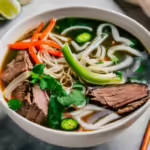
This authentic recipe for classic Vietnamese pho features a rich beef bone broth, simmered for hours to achieve maximum flavor. Paired with tender rice noodles, thinly sliced beef, and fresh garnishes like basil and lime, it's the ultimate comforting soup.
- Large stockpot
- Fine mesh strainer
- Cheesecloth
- 3 lbs beef bones
- 4 quarts water
- 1 onion (charred)
- 4 ” ginger (charred)
- 5 whole star anise
- 1 cinnamon stick
- 1 tbl fish sauce
- 1 lb rice noodles
- 1 lb beef sirloin (thinly sliced)
- Bean sprouts (basil, cilantro, chili slices, and lime wedges for garnish)
- Char beef bones under broiler. Simmer in water with spices and onions for 2+ hours.
- Strain broth and skim fat.
- Briefly boil rice noodles. Rinse.
- Thinly slice raw beef.
- Assemble pho bowls with noodles, beef, broth and garnishes.
- Mix in bowl before enjoying.
- Simmer the broth for at least 2 hours, up to 24 hours for maximum flavor extraction.
- Cook the rice noodles just before serving to avoid sogginess.
- Let diners customize their pho with garnishes and extras like hoisin and Sriracha.

